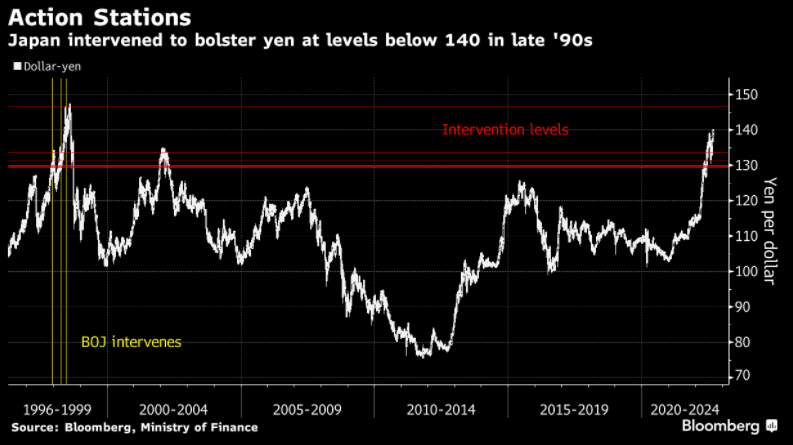Taps Coogan – September 2nd, 2022
Enjoy The Sounding Line? Click here to subscribe for free.
Enjoy The Sounding Line? Click here to subscribe for free.
The Japanese Yen has lost the most value against the US dollar since the lows set in 1997, as the following chart from Christophe Barraud highlights.

The last time the Yen was this weak versus the dollar, 1997, was the last time the Bank of Japan (BoJ) intervened to support its currency.
The late 1990s also marked the peak in Japan’s working age population and the dawn of its ultra-accommodative monetary policy. Japan has maintained negative or near-zero interest rates since 1999 and has been doing QE nonstop for a decade.
Analysts have wondered for years why there hasn’t been more inflation in Japan given the BoJ’s endless accommodative policy. Even today, inflation in Japan is only 2.6%, barely above the BoJ’s target and much lower than inflation in other developed economies.
The truth is that monetary accommodation without helicopter money is really only inflationary for financial assets. Meanwhile, ageing and shrinking demographics cause the endogenous money supply to shrink and are thus deflationary counterforces.
Many are predicting that the BoJ will be forced to suspend its policy accommodation and defend its currency. While it’s true that the BoJ has quietly tapered its QE, Old Taps remains skeptical about a dramatic policy shift. Inflation in Japan just isn’t that high and until it is, the Yen depreciation will likely be viewed by the BoJ as a blessing in disguise.
Would you like to be notified when we publish a new article on The Sounding Line? Click here to subscribe for free.
Would you like to be notified when we publish a new article on The Sounding Line? Click here to subscribe for free.

